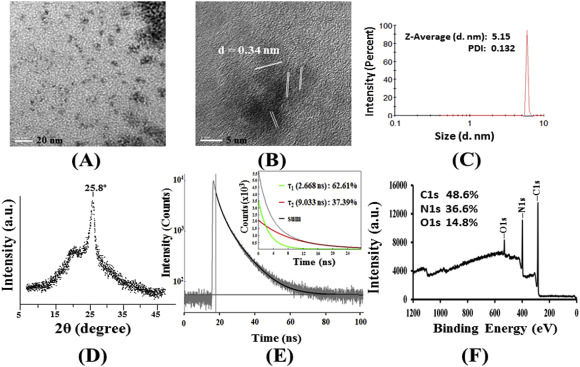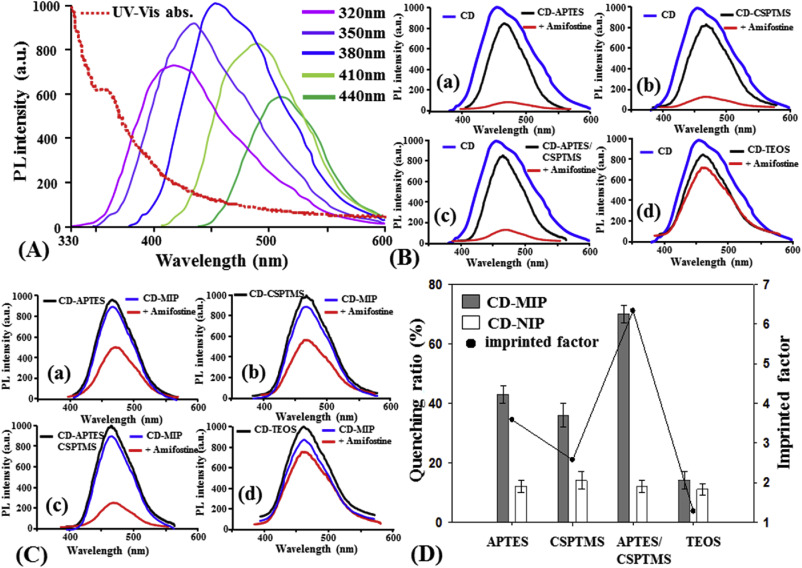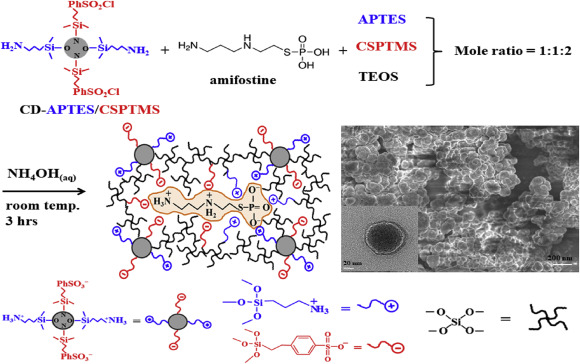| 作者/單位: | 陳建良/藥學系 |
| 期刊名稱: | BIOSENSORS & BIOELECTRONICS |
| IF值: | 10.257 |
| 領域排名: | CHEMISTRY, ANALYTICAL (1/86) 1.2% |
| 文章摘要: |
A silica-based molecularly imprinted polymer (MIP) formed by functional silanes (basic 3-aminopropyltriethoxysilane (APTES) and acidic 2-(4-chlorosulfonylphenyl)ethyltrimethoxysilane (CSPTMS)) was crosslinked with carbon dots (CDs) to develop a fluorescent sensor toward an amphiprotic template, amifostine (AMF). The CDs were synthesized by hydrothermal carbonization of succinic acid and an ionic liquid and possessed hydroxyl and pyrrolic functional groups, which enabled the CDs to be derivatized with silanes for subsequent sol-gel polymerization. Except for the CDs derivatized with tetraethoxysilane, CD-APTES, CD-CSPTMS, and CD-APTES/CSPTMS (molar ratio = 1/1) all presented distinct fluorescence dynamic quenching when interacted with AMF. However, APTES/CSPTMS was selected as the sol-gel monomer for the formation of MIP because its quenching ratio and imprinted factor were the highest among the CD-silane-MIPs. Moreover, 0.5 mg/mL of CD-APTES/CSPTMS -MIP in pH 7.5 buffer was used to quantify AMF (0.5-200 nM, LOD = 0.15 nM) and alkaline phosphatase (ALP) (2-150 mu U/mL, LOD = 0.5 mu U/mL), which activates the metabolism of AMF, and the calibration curves of AMF and ALP were determined via fluorescence quenching and restoration, respectively. The recoveries of 1, 10, and 60 nM AMF from 360-fold-diluted human serum solutions were 95, 104, and 103%, respectively, with RSD values that were lower than 4.2%. The average ALP activity of the original human serum was determined to be 32.1 U/L (RSD = 5.41%).
|




